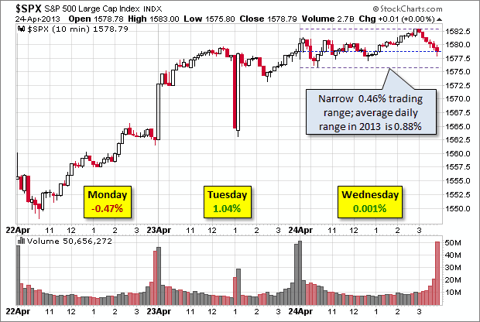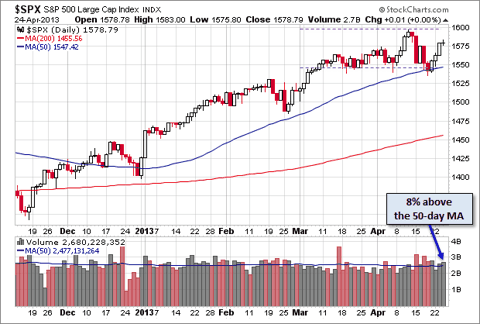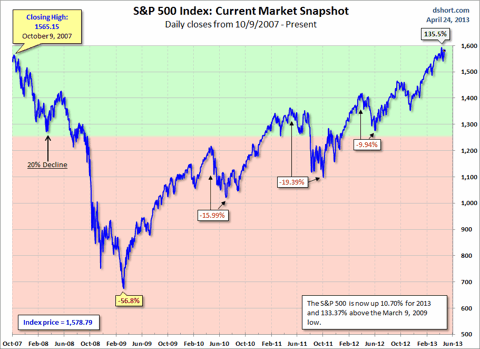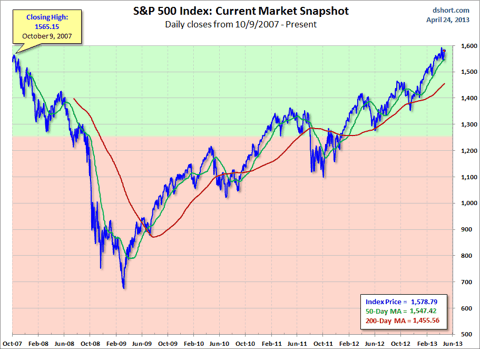The March issue of the Ben Graham Net-Net Newsletter comes out today. And while I was putting the March issue to bed, I got a trade confirmation for the newsletter's February pick.
I put in a bid for that stock on February 6 and it was filled on March 1. So – that's about a month later. This kind of waiting period is typical in net-net land. That's not the first time I've had to wait a month to get a net-net order filled. Although it is the longest the Ben Graham Net-Net Newsletter's model portfolio has had to wait for a stock.
The record won't stand. Some day it will take the newsletter more than a month to actually buy one of its picks. In fact, I'm sure a day will come when we'll be especially unlucky – and one of the newsletter's orders will simply go unfilled.
For those who don't know, the Ben Graham Net-Net Newsletter uses a real brokerage account as its model portfolio. The amount of money involved is small. Right now, the account's value is a smidge over $8,000. But it's my money. And more importantly it's real money that can only be used in real trades. Picking a net-net is one thing. Buying a net-net is another.
We don't start counting a net-net's performance once I pick it.
We only start counting a net-net's performance once it's actually in the portfolio. And we include the cost of commissions in the share price. Since the Ben Graham Net-Net Newsletter's model portfolio is a Scottrade account commissions are always $7. So, they aren't a terribly important factor in the results.
But the difficulty in acquiring shares of the newsletter's chosen net-net is a pretty big factor.
I'd like to talk about that now. Because this – more than anything – is the practical part of net-net investing that turns people off. In today's world we are used to getting things ! at a set price with the click of a button. Not just our books at Amazon. But our shares of Microsoft (MSFT) and Wells Fargo (WFC) and all the other blue chip stocks.
For those stocks, the last price you saw is pretty much the price you're going to pay. As far as the individual investor is concerned, buying Microsoft (MSFT) or Wells Fargo (WFC) isn't much different from picking a dish from a restaurant menu. You just point to the name of the thing you want and you expect your bill will have the price you saw listed.
Well it doesn't work that way with net-nets.
This frustrates new net-net investors in a couple self-destructive ways.
The Bid/Ask Spread
Some of them think the bid/ask spread – the difference between the highest price at which someone has expressed a willingness to buy shares and the lowest price at which someone has expressed a willingness to sell shares – is some sort of extra fee.
It can be. But you should never think of it that way.
I was recently talking to someone about this very issue. He wanted to know how much you should bid above the last trade price for a net-net. How far toward the ask do you need to move?
The truth is that you don't necessarily have to move toward the ask price at all. It's understandable why new net-net investors assume it's necessary to do this. And there may be times when you want to bid quite a bit more than the last trade price for a stock. (I have done this under very special circumstances.)
So part of that person's logic was sound. The more you play hard to get on price the harder it is to get your shares. That's obvious.
But the other part of his logic – that because he wanted a large number of shares relative to the amount of volume the stock normally traded he had to pay even more than most bidders – doesn't make sense.
A trade needs a buyer and a seller. The buyer wants to buy. The seller wants to sell. In an illiquid stock, the buyer is wonderi! ng how mu! ch his entrance fee will be. Meanwhile, the seller is wondering how much his exit fee will be.
If a stock normally trades 3,000 shares a day and you want to buy 30,000 shares you can quickly exhaust the supply of available sellers. That's true. Although if you watch the most illiquid stocks around – and I kind of have to as part of my job writing the Ben Graham Net-Net Newsletter – you'll notice that exhausting the supply of available sellers tends not to be the reason why you can't get the shares you want.
The reason is much simpler than that. It's Monday morning. You want to buy. Meanwhile, nobody wants to sell.
You'll see an ask price. But it's just a market maker. And it's not worth your trouble. It'll be quite a bit higher than the last trade – maybe 25 cents – and it'll only be offering you a few hundred shares at most. Ignore it.
The saddest thing you can do is just bid whatever that ask price is figuring you'll get your shares. You will. You'll get a small portion of the full amount you wanted. You'll pay something like 25 cents more than the last trade price. And anybody who is watching that stock – which up till now was probably some undiscovered gem you were hoping to keep quiet about – will now be paying closer attention to it. If a stock you know moves 5% or more – and a 25 cent move on a $5 stock is 5% – it's human nature to rubberneck.
For folks who often buy and sell illiquid stocks, seeing such a stock up or down 10% won't cause them a moment's thought once they see the volume was 100 shares. If it was 10,000 shares they may feel differently.
Regardless, if you're looking to buy shares of a stock – you want it to stay flat. You want the price flat. And you want people's feelings about it equally flat.
You don't want someone tweeting about it or blogging about it. And nothing gets people talking about a stock more than a change in price.
(It's amazing how invisible stocks bec! ome when ! they keep displaying the same price day after day.)
Invisibility is good. You want that.
Because whether you are buying or selling – you need someone on the other side of the trade. It is easiest to buy from a motivated seller. And while in liquid stocks the tumult of scary headlines and big price declines may be the great motivator – in illiquid stocks it can often be the opposite. A lack of action is what people fear. The best motivation for a seller to be accommodating on the price they're asking for an illiquid stock is the fear that they can never get out of the stock.
The seller most likely to feel that way is someone who owns many more shares than are sold in a normal month. I never talk about average daily volume figures for illiquid stocks.
Yes, websites display them.
But if you've ever checked the historical trades for some stock that's supposed to trade an average of 800 shares a day – you'll see it does nothing of the sort. It probably never trades 800 shares. It just doesn't trade most days. In fact, it's likely the stock trades closer to 5,000 shares a day but it only trades a couple days a month. Even then, you'll notice there may have been a day when it traded 80,000 shares instead of 800. That happens.
Always remember that there may be someone in a mirror image position from you. When you want to buy a lot of shares in some illiquid stock (for the very first time) – there could be someone there who has 100,000 shares of stock he's been holding for a couple years now. If he wants to sell, you can be his exit.
Most people who are new to buying and selling net-nets underestimate the difficulty of buying 500 shares in a stock that allegedly trades 1,000 shares on an average day and overestimate the difficulty of buying 10,000 shares of the same stock.
This can cause them to do some things they shouldn't. The two biggies are assuming that you simply can't get shares of some particular stock. That's sill! y. You do! n't know what you can get unless you try.
If you need 20,000 shares of a stock to make it a meaningful position in your portfolio and it only trades 1,000 shares on an average day – that's usually not a problem. At least not the problem you think it is. Now, if you want to know you can sell that position at a moment's notice – then you've got a problem.
And you shouldn't buy the stock.
But if you're looking to buy and hold something Walter Schloss style – where maybe you're hoping you'll be in and out in a year but your holding period is just as likely to end up being four years, then you're absolutely fine buying a stock like that.
In fact, other than the slight annoyance caused by putting in bids for stocks and not knowing when they'll be filled, the actual owning of illiquid stocks shouldn't be a problem for you.
There are two personal needs that make illiquid stocks a huge problem. And you need to be completely honest about these needs before deciding to delve into the world of net-nets.
1. The need for activity
2. The need for cash
You can't always foresee the second one. I know that. But, in general, try not to use your brokerage account as a source of cash. If you've ever taken money out of a brokerage account before – it's a very good idea to institute a rule that requires you to hold cash against the amount of your illiquid stocks. If you're someone who has never in your life withdrawn money from a brokerage account once you've put it in there – there's no reason you need to do this. But a little cash does make some people feel better.
I don't do it. My goal is always to be 100% invested. I was just asked about this recently and I hope to do a full article on that topic sometime soon.
The other issue is the need for activity. Or at least a tendency to trade. If you like making little changes – or big ones – to your portfolio all the time, illiquid stocks (and thus net-nets)! are prob! ably not for you.
I've said this in a lot of articles. But the toughest part of net-net investing for most people is actually holding the net-nets. The second toughest part is frustration with illiquidity (basically having to sometimes wait a month to have your orders filled). And the third hardest part is dealing with the ickiness of some net-nets.
People people to think of their net-nets as more speculative than their investments in Microsoft and Wells Fargo.
I'm not sure why that is. Microsoft and Wells Fargo are better businesses. But you also paid a lot more for them. I can understand why someone would prefer investing in Microsoft and Wells Fargo to investing in net-nets. What I can't understand is why someone would want to do both – but treat their net-nets as a less serious pursuit.
I've known some people who were really good at finding net-nets. But, sadly, they were also really good at finding reasons for selling those same net-nets too soon.
With any stock, you should at least hold it long enough for the research you did to be relevant. What I mean by that is if you bought a stock for its competitive position, good management, turnaround prospects, etc., you should at least be holding it for enough time that those things can actually have an influence on the stock's performance. Five months is not enough time for your wide moat thesis to play out.
I mentioned in my article about DreamWorks (DWA) that if I invested in that stock it would be a 25% position that I'd hold for at least three years. Some people have asked me about this wondering why the size or holding period is that important. If you like the stock and you have 15% of your portfolio in cash today, why not put 15% of your portfolio into the stock?
Good point. There's nothing wrong with doing that. But I'm not sure it fits my process. I don't like to be distracted by a lot of positions at once. I have no problem with 10% positions that are part of a group opera! tion. Hec! k, if I found 15 Japanese net-nets I loved equally, maybe I would've put 3% of my portfolio into each.
But DreamWorks is not that kind of stock. I would be buying it for its intangible assets, organization, management, etc. That's specific to the company. It's not part of a group operation. And I don't want to hold half of dozen of those kinds of things.
But the Ben Graham Net-Net Newsletter's model portfolio is about to increase to 13 stocks. And I expect it will eventually grow beyond that – simply because I won't sell many of the old net-nets and I'll keep adding a new net-net every month.
So why are the "rules" different for a net-net than they are for something like DreamWorks.
Like I said, the rule for me is that you can't just sell a stock to sell a stock. Now, yes, sometimes you find something that is truly a once-in-a-lifetime opportunity and then you can sell anything you want. You have my blessing. But other than that, you should try to – on average – at least be holding your stocks long enough for your original investment case to play out (right or wrong).
For net-nets, the investment case is simple. They're trading for less than their net current assets. I think the business would be worth more than its net current assets to a private owner. And I think the business will survive.
We can break that down into two ideas:
1. Cheap
2. Safe
The "cheap" part of the investment case for a net-net can play out (rightly) simply by the stock rising about its net current asset value. I don't mean what the NCAV was when you bought it. I mean the NCAV when you sell it.
The "safe" part of the investment case can play out (wrongly) when it's clear the company is going to go belly up.
Finally, I'm not able to handicap the safe and cheap odds on a dozen net-nets every day, week, or even month.
So, I think it makes sense to only check back in with each stock at yearly intervals. Thi! s has the! benefit of keeping me focused on picking new net-nets for the Ben Graham Net-Net Newsletter's model portfolio. Since the original selection of a stock is where you introduce the most risk into your portfolio – that's where investors should always be focused.
That means I basically have four things to check with every net-net:
1. Cheapness (Price/NCAV)
2. Safety (Bankruptcy Risk)
3. Holding Period (Annual Intervals)
4. Profit (50%+)
The last one – 50%+ profit – is a simple idea. Ben Graham liked to buy stocks at two-thirds (or less) of their NCAV and sell them when they passed NCAV. Graham's turnover was almost always below 50%. So, he held stocks for at least two years. Walter Schloss suggested his holding period averaged about four years.
I've mentioned two to five years as a range of how long you should expect to hold most net-nets. A simple calculation shows that if the Ben Graham Net-Net Newsletter is going to beat the overall market and is usually going to hold each net-net for anywhere from two to five years, it needs to sell stocks for at least 50% more than it paid for them.
This is especially true if we have losses. And we will have losses. Sometimes they'll be big ones. Hopefully, we won't have too many total losses. But we're definitely going to have losses that we need to make up for.
Of course, the idea of a 50% profit in each net-net is not exactly a criterion for selling the stock. I don't believe in setting profit targets.
But, as I sell net-nets from the Ben Graham Net-Net Newsletter's model portfolio it's important to watch how I did on each of these 4 points:
1. Was I right about the stock's cheapenss?
2. Was I right about the stock's safey?
3. How long did I end up holding the stock?
4. And did I sell the stock for at least 50% more than I bought it for?
Those four points will help us judge the newsletter's performance.
Next month, I'll ! have anot! her sell/hold decision to make – in an article everybody can read for free – and I'll have a new net-net pick for the newsletter's readers as well.
Remember: the March issue of the Ben Graham Net-Net Newsletter comes out today.
Ask Geoff a Question about the Actual Buying and Selling of Net-Nets
Check out the Ben Graham Net-Net Newsletter
Check out the Buffett/Munger Bargains Newsletter
 To get an in-depth perspective on the subject, AdvisorOne spoke with Philip Palaveev (left), CEO of the Ensemble Practice, an advisory-practice consulting firm based in Seattle. He addressed the following questions:
To get an in-depth perspective on the subject, AdvisorOne spoke with Philip Palaveev (left), CEO of the Ensemble Practice, an advisory-practice consulting firm based in Seattle. He addressed the following questions:




